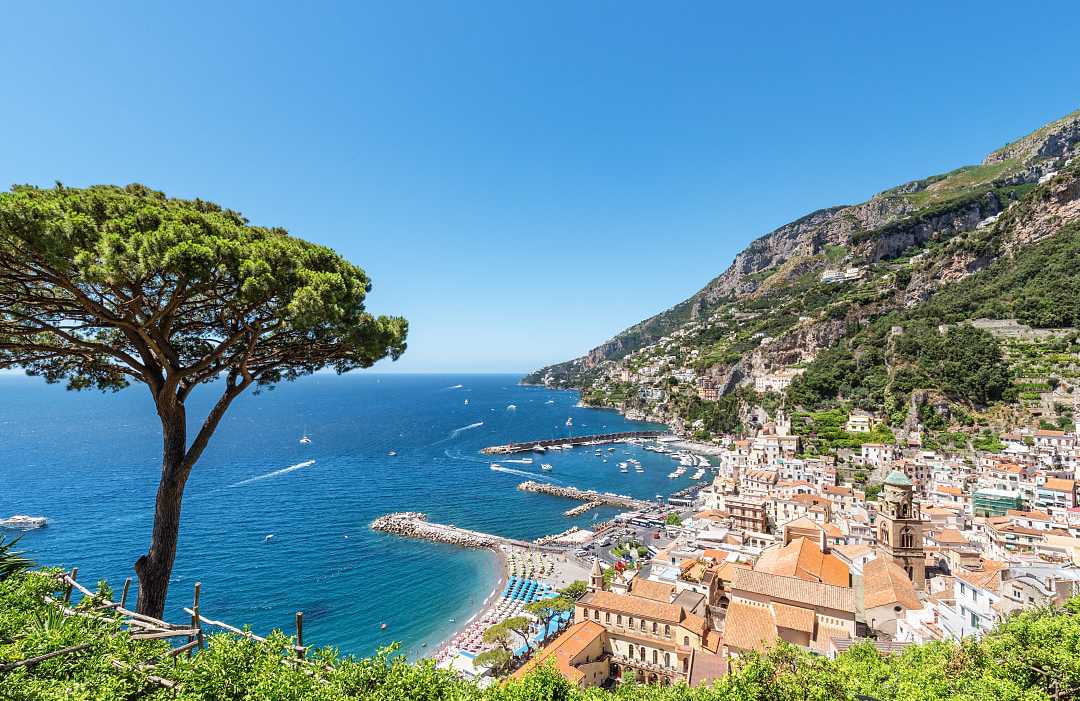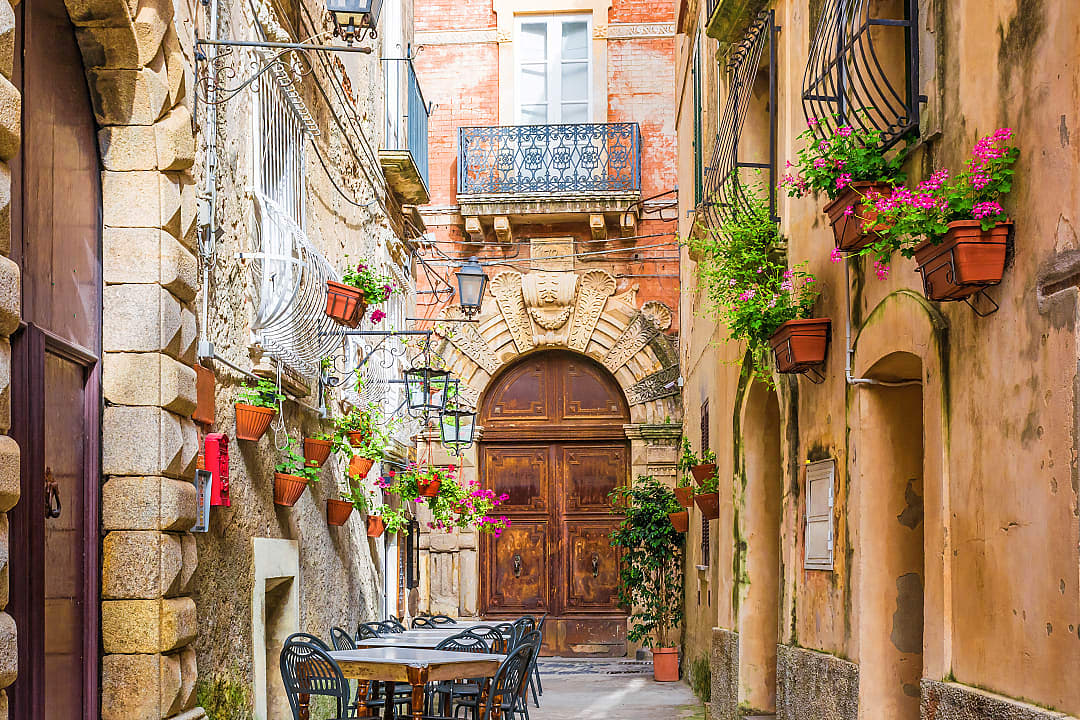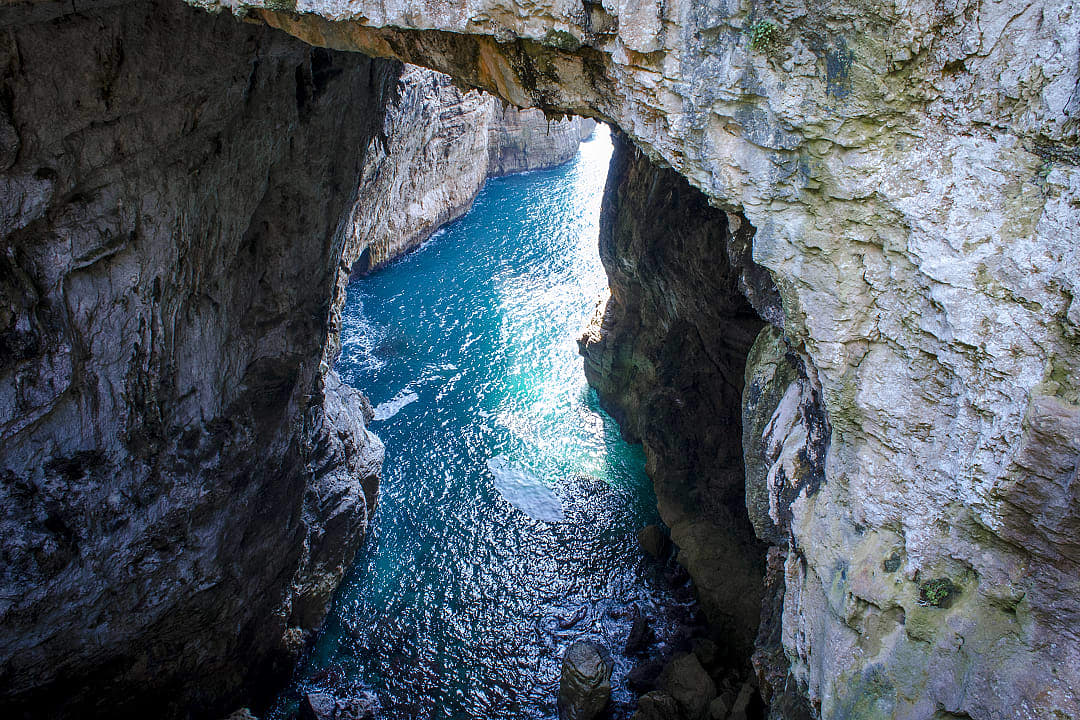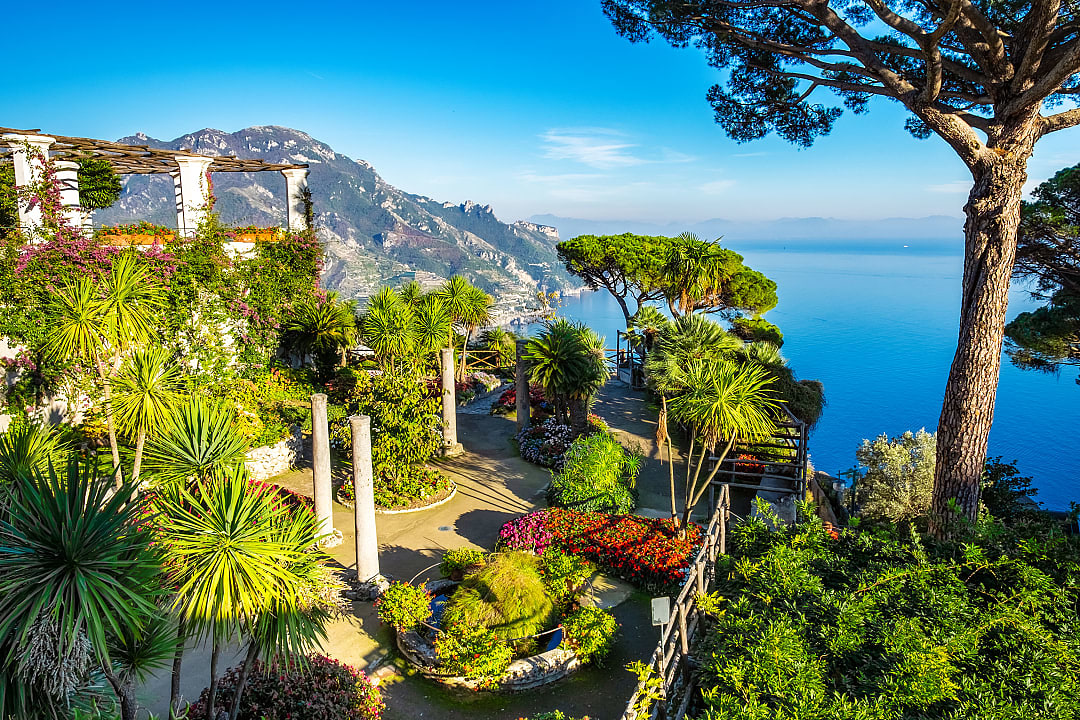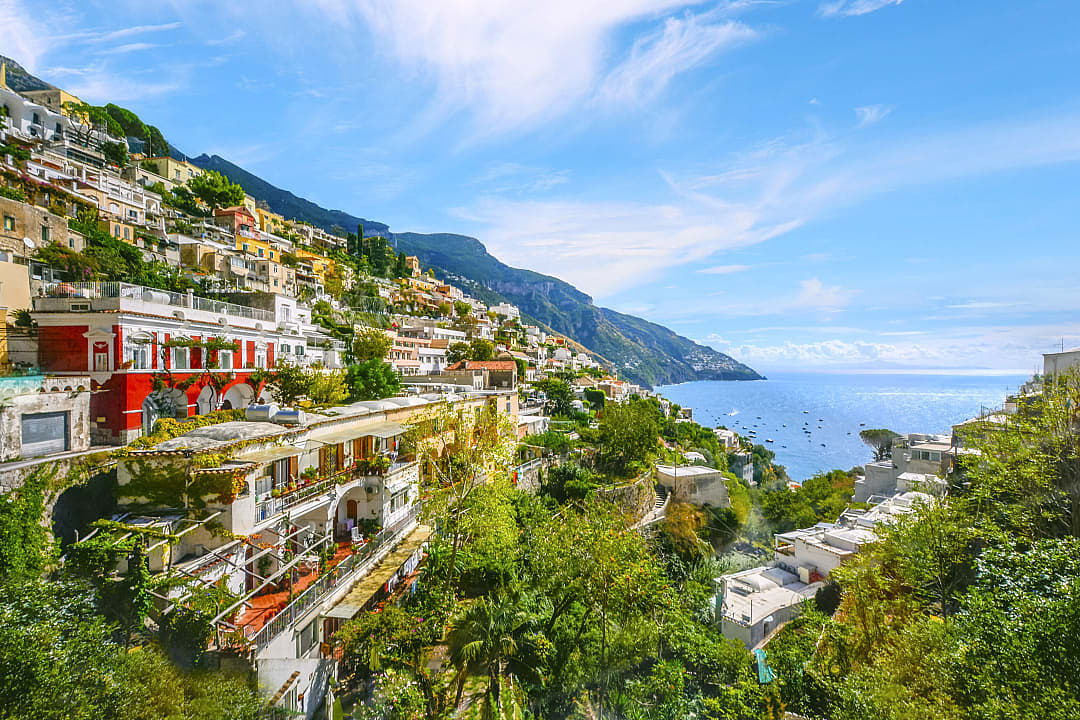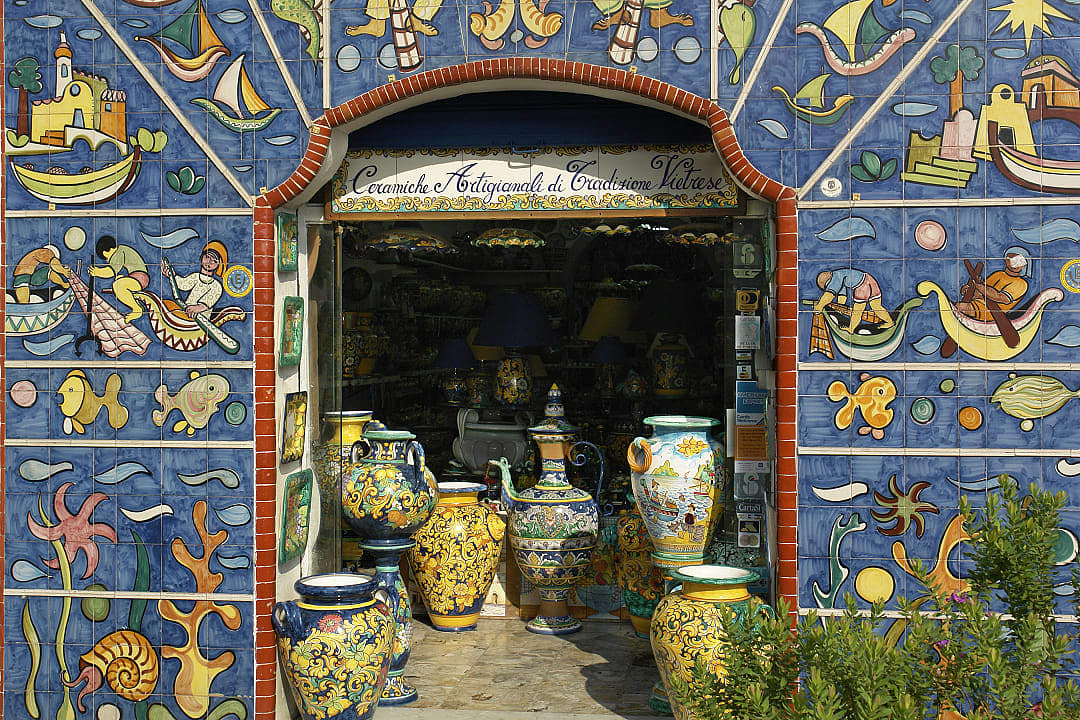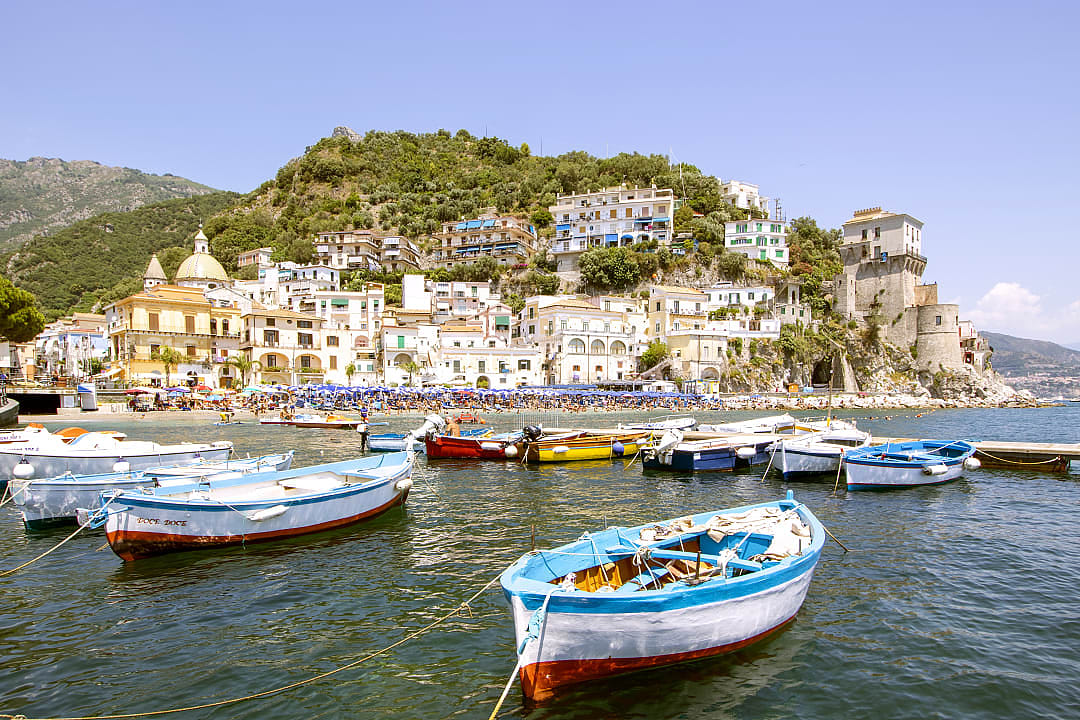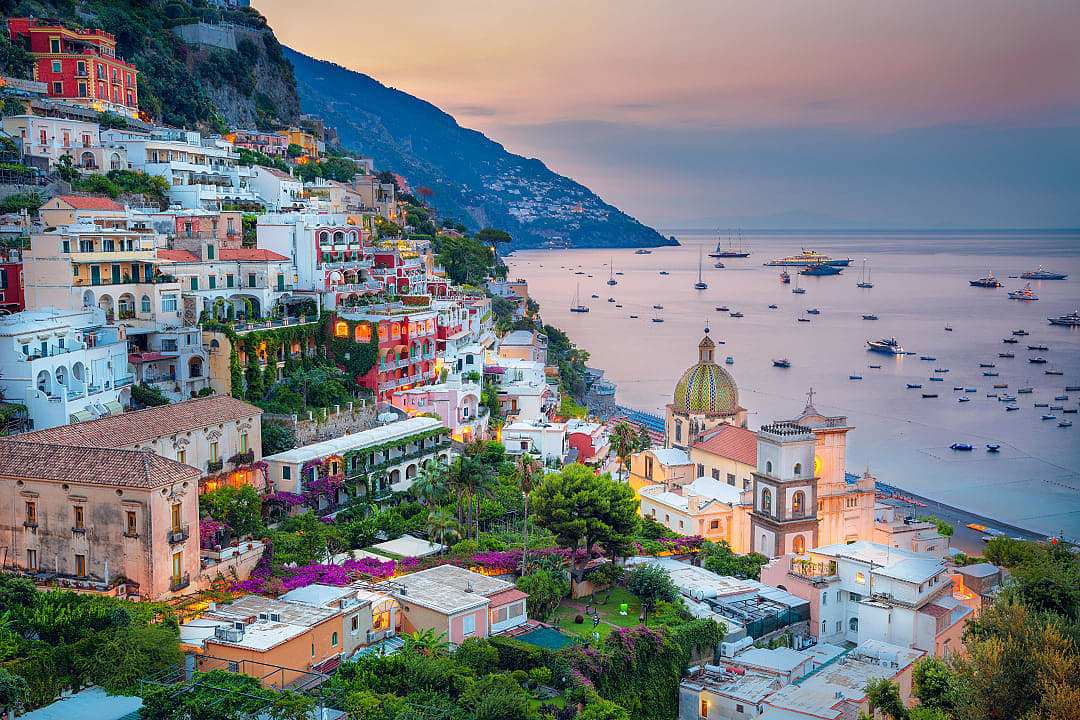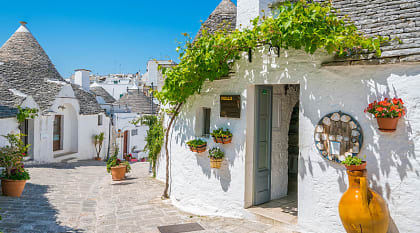Chic cafés, glamorous villas, and fashionable boutiques line every street of Positano. The town exudes charm and the pastel homes that hang on its hills are a breathtaking backdrop to the luxury yachts anchored in the Marina Grande. Find a comfortable recliner on the sand or view the famous Byzantine painting in the 13th-century church of Santa Maria Assunta before enjoying a gourmet Mediterranean dinner during sunset.
Positano’s dramatic beauty has captivated artists, writers, and travelers for centuries, transforming it from a humble fishing village into a glamorous international retreat. The town's architecture, characterized by vaulted ceilings, domes, and vibrant colors, speaks to its history as a medieval port and, later, a haven for creative spirits in the 20th century. Positano offers an enchanting mix of breathtaking natural scenery, sophisticated boutiques, and a relaxed, sun-drenched atmosphere.
- Ancient Origins: While known for its picturesque charm today, Positano has roots dating back to Roman times, with remnants of a Roman villa discovered beneath the Church of Santa Maria Assunta
- Maritime Power: In the Middle Ages, Positano was an important maritime power, competing with Amalfi and other coastal towns for trade across the Mediterranean. Its strategic location fostered prosperity and a need for defensive structures
- Artistic Haven: After a period of decline, Positano experienced a renaissance in the mid-20th century, when it became a favored retreat for artists, writers, and celebrities drawn by its bohemian charm and inspiring landscapes, fueling its transformation into a luxury destination
- Fashion Legacy: The town is famous for its "Moda Positano,” a distinctive style of lightweight, elegant resort wear characterized by linen, lace, and vibrant prints, born from local artisanal traditions
Immerse yourself in Positano’s dramatic scenery, scents of citrus, and the sound of lapping waves.
- Feel the warm Mediterranean sun on your skin as you stroll down charming, flower-lined staircases, the cool pebbles beneath your feet on the beach and the soft embrace of linen garments in a local boutique
- Taste fresh seafood served at a cliffside restaurant with panoramic views, tangy limoncello made from local lemons, and sweet sponge cake soaked in lemon syrup, while enjoying the sea breeze
- Hear the gentle lapping of waves against the shore, the distant hum of Vespas navigating the winding roads above, and the melodic clang of church bells drifting down the hillside
- See the iconic pastel-colored houses stacked seemingly precariously on the cliffs, luxury yachts dotting the turquoise waters of the bay, vibrant bougainvillea spilling over ancient walls, and breathtaking sunsets that paint the sky in fiery hues
Positano offers relaxation, exploration, and sophisticated indulgence, making it ideal for a luxurious coastal escape.
- Marina Grande: The main beach and bustling heart of Positano, offering comfortable sun loungers, beach clubs, and easy access to boat tours and water taxis for exploring the coastline
- Fornillo Beach: A quieter, more secluded beach reached by a scenic walk from Marina Grande or a short boat ride, perfect for a more peaceful sunbathing experience
- Church of Santa Maria Assunta: Visit this iconic 13th-century church, a centerpiece of Positano, to admire its majolica-tiled dome and the revered Byzantine painting of the Black Madonna and Child
- Vallone di Furore: A dramatic fjord-like inlet just south of Positano, featuring a charming fishing village and a picturesque bridge, offering a unique photographic opportunity
- Path of the Gods: Embark on a legendary hiking trail offering unparalleled panoramic views of the entire Amalfi Coast, a truly invigorating experience
Recommended length of stay: 2-3 days
Learn more: In the Footsteps of Italian History Tour: From Antiquity to Contemporary
